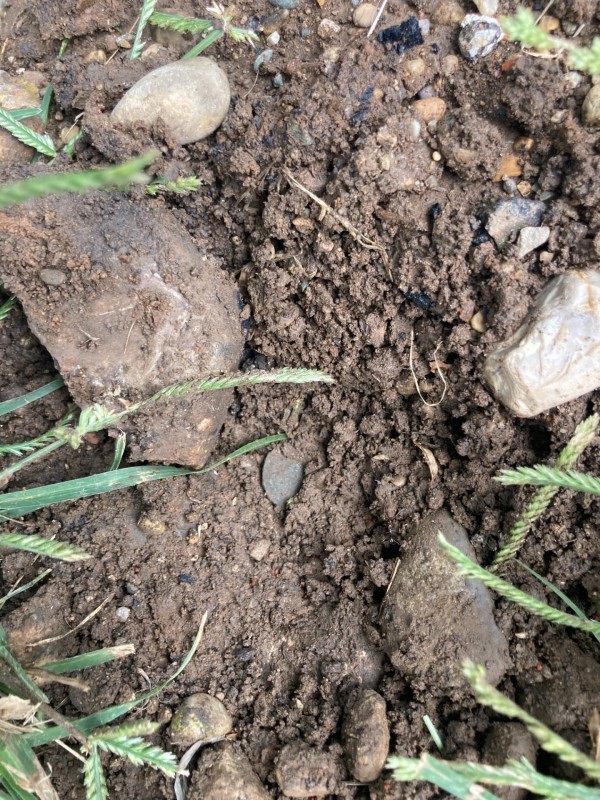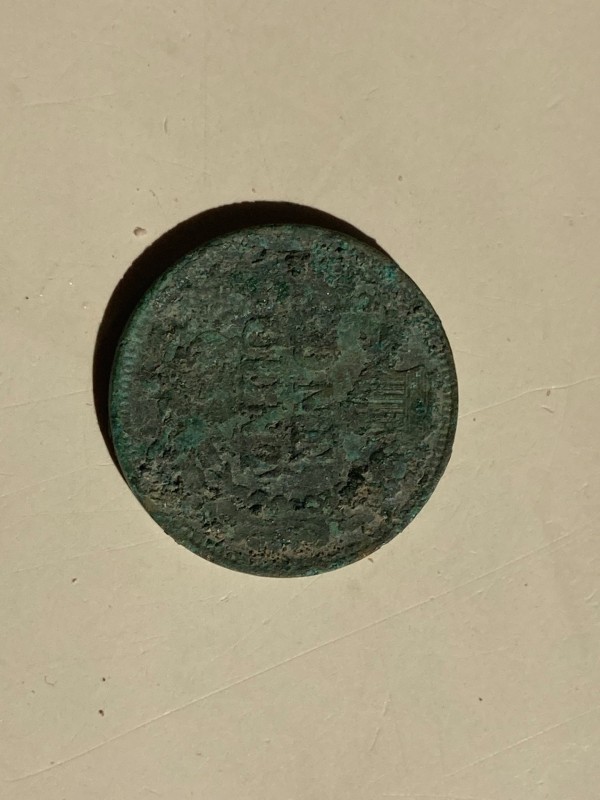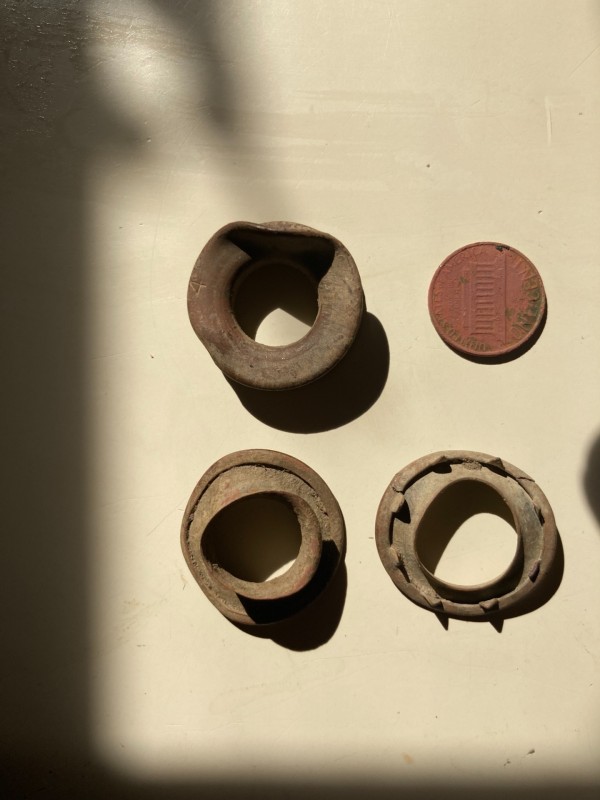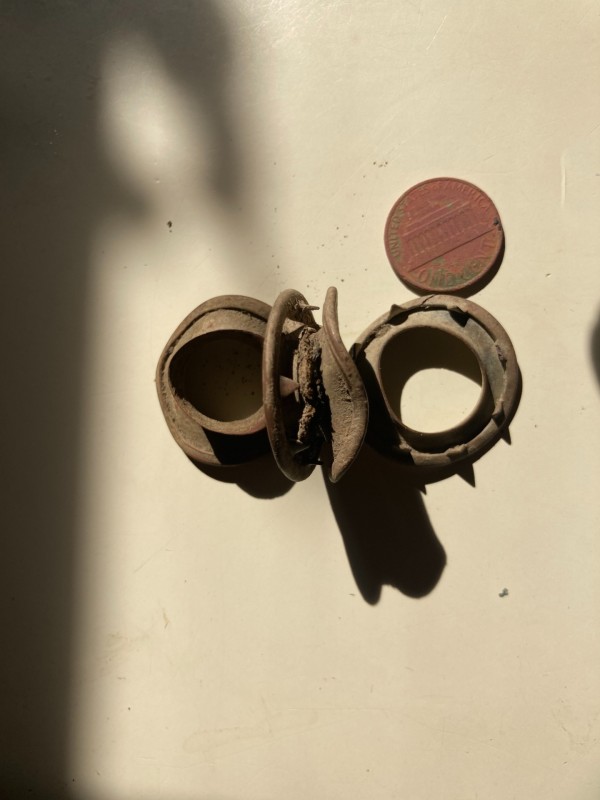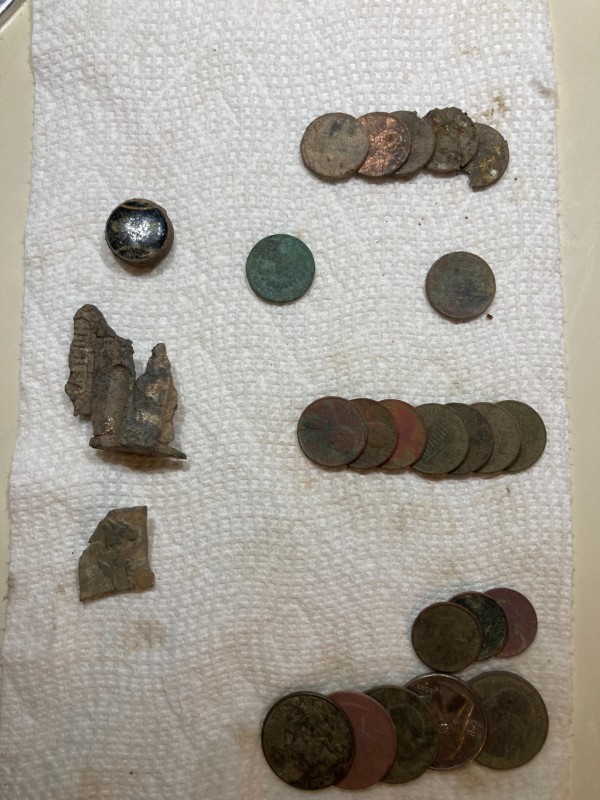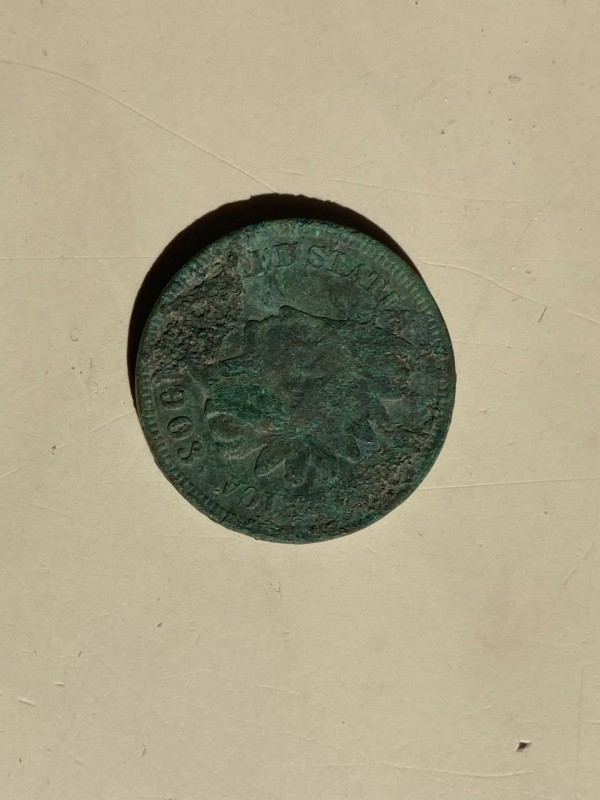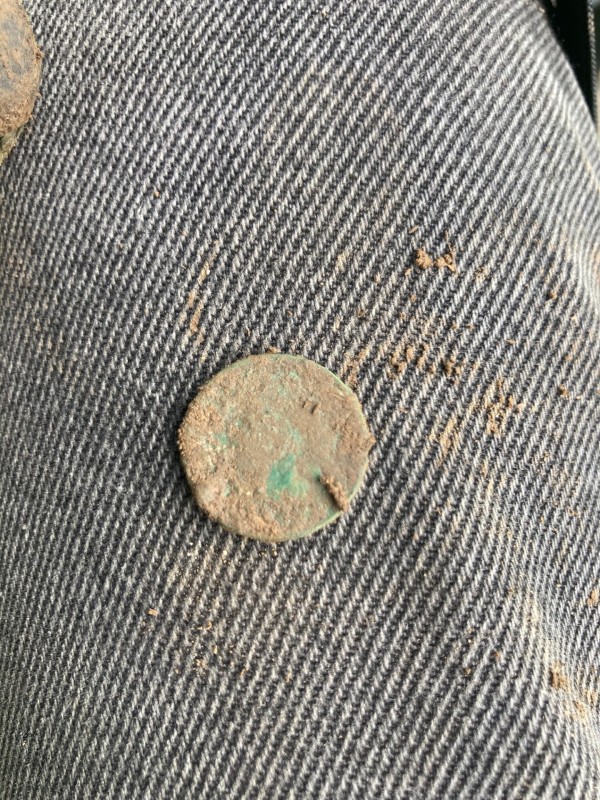-
Posts
339 -
Joined
-
Last visited
Content Type
Forums
Detector Prospector Home
Detector Database
Downloads
Everything posted by Geologyhound
-
Yep. Each region has its own challenges. Know your area…. Holly leaves can be enough of a problem, let alone old blackberry, or wild rose, or gorse, etc.
-
Any pads I have purchased with elastic bands tend to stretch and slip through the clip, so I am constantly tightening them. I have a set with corduroy/canvas type straps and I rarely have to tighten those. I got pads with hard caps. If you hunt anywhere with rocks, the hard caps will be good. Of course, if you are out west, the hard caps also offer protection against the goat’s head seeds. Natural caltrops, and those spikes can penetrate a pad, jeans, and skin underneath.
-
I am sure you could find a photo filter that would do the job…. 😆
-
We used to have some Sunday dinners at the Lakeshore Lodge. Small world …. If you’re looking for beaches, Sunset is probably one of your better bets. That used to require a permit which was free, but it’s been a few years since I lived there. Bastendorff gets some traffic too, but I think it costs to get in to Bastendorff now - at least to use the road and parking lot. The Bandon Jetty Beach gets some traffic (and has petrified wood and agates). If you go that far south, make sure you stop at the Face Rock cheese factory for some free samples and ice cream. Whiskey Run does not get as much traffic, but there is naturally occurring gold dust there (and abundant petrified wood and some agates - more under good winter conditions) and I also found perhaps my most unusual gold nugget there. I also have seen Japanese glass floats recovered off that beach. Just don’t try to wade through any gorst patches.
-
After watching this, I still have some questions. I use GPS units with my job. Generally speaking, there are three categories: survey grade, mapping grade, and consumer grade. The differences are in accuracy (both the accuracy of the unit and the capability of monitoring multiple GPS satellite arrays) and ability to post-process the data file using data from a fixed station. Post processing allows correction of “hiccups“ in the data from poor satellite geometry, loss/gain of a satellite, etc. Aside from post-processing, survey and mapping grades allow exporting the data file for map generation (like AutoCAD). Modern survey/mapping grade GPS units also have the “Floodlight” capability of picking up a signal under dense tree cover and in canyons (natural and urban). Based on the preview, Go Terrain definitely appears to be consumer grade (I believe 6-7 meter accuracy was mentioned). As such, I suspect it will also suffer from positional hiccups in satellite geometry, and loss of signal/poor accuracy in signal-challenged locations. Ultimately, I do not need 4 cm accuracy for metal detecting purposes. But, I would like to know how they have accounted for typical GPS signal issues in order to prevent a straight line path from being depicted as a seismograph zigzag. With plus or minus 6-7 meters (I am guessing this is average) on an old path and the same on a new path, the crossing path function is going to be very much an estimate. Plus or minus 20 some feet leaves a lot of room for a “hunted“ area, but at least it gets you in the ballpark for a large site. As this is only active in Europe, I suspect they are currently monitoring European GPS networks (i.e. Galileo, possibly Russian Glonass etc.). Hopefully, they also have access to the American GPS network. At the end of the day, this could still be a useful app depending on the site. However I would say this must have the capability of overlaying historical topo maps. Otherwise, it lacks capability compared to other commercially available metal detecting GPS apps. I would like it even better if I could rotate, scale, and overlay custom maps like Sanborns. Frankly, if you have purchased a new XP detector, you should get a complementary membership for a certain period of time. Hey XP, that may help you hook additional clientele on the higher tier plans… 😁
-
Yeah, he got the ring part, but missed the tab! 😂
-
One more question - I am also curious about the round item on the middle far right of your “good“ picture - the one with the small peg. I am guessing the peg is the back of a one piece, or middle of a two piece, item and was intended to keep the item from shifting on whatever it was mounted on or affixed to. If so, the side not shown would be the front. Is there any detail on that side?
-
Research pays dividends! Nice variety of finds there! When I zoom in on the side of your “medallion” with the intact face, I think I am seeing letters along the rim from just above the cemented lump around the 9:30 position to about the 2:30 position. Can you make out any letters or post some close-up pics of that area with different light angles? I am not seeing letters on the damaged face side, but that may be due to wear, remaining cementation, or picture resolution (the top part of that pic is slightly fuzzy). I am trying to figure out the likely use with relief on both sides, possible writing on one side, and mounting holes at 9:00 and 3:00. Haven’t come up with any good ideas on that score yet. My wife’s first glance impression with the holes was some sort of bag/purse ornamentation.
-
Welcome! The southern Oregon coast was my old stomping grounds for many years. I assume if you’re looking to hunt beaches you must be a little further north on the coast?
-
Lot of good information here. I was in your shoes earlier this year and read through the forums to help decide. Search up Rattlehead’s dissertation on the Manticore. He also has posted some good observation threads on other detectors.
-
I’m new to the D2 this year. But I have about 30 years experience with a White’s Spectrum XLT. There is definitely a learning curve to the D2, but you can go with any of the stock programs until you get a feel for the machine. You need to walk before you can run. One of the main selling points to me for the D2 was the multiple save slots for custom programs. I have been impressed with the ability of the D2 to ferret out some coin targets mixed in with abundant trash. It can be a racket on the ears in such conditions and takes patience and slow going. But ultimately, I think your choice of detector does not matter as much as your choice of where to hunt. Spend some time in the local history section of your library. Get permission to hunt old sites (especially old sites which have never been hunted), and just about any modern detector will perform fabulously. Experience, settings, and equipment will make the difference on the borderline iffy targets.
-
Welcome back to the wonderful world of detecting! Have you decided on a new detector or still considering?
-
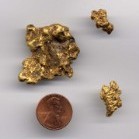
Detector Electronics Corp. No Longer In Business?
Geologyhound replied to AV-Digger's topic in XP Deus II Forum
American Detector Distributors are covering XP service in the US. If you have an XP service issue, please call 1-800-933-2897. The lady with whom I spoke did mention somebody was taking over the old metaldetector.com website. -
Beauty of a find!
-
I concur it looks to be a high grade mica schist to a low grade gneiss. In this case, “grade” refers to the degree of metamorphism within any particular metamorphic group. The red blobs could be fractured garnets.
-
Not sure of the exact name of your stone, as there are a variety of cryptocrystalline yellowish rocks. Some additional information like hardness and streak color would help. Will this rock scratch a penny, glass, or other Moh’s hardness index materials? If you scraped it across some unglazed porcelain, would it leave any color behind, and if so, what color? There are several processes which can generate a “shell” on a rock. One of the most common shells is called a weathering rind. This is a result of mechanical or chemical alteration of the exposed surface. Weathering rinds are a common occurrence.
-
What kind of head should I use on the hammer?
-
Last week, I hunted two old schools. I think they have both been hit pretty hard. Found some modern coins and a wheat penny at the first place along with what appears to be old #4 brass saddle grommets. These are toothed on the one side and swivel on the other. I found one intact and halves of three others. If anyone knows these are something different, I am all ears. I also found pieces of an old cap pistol, one of which still has the maker’s name – Hubley. At the second school, I was experimenting with settings from a recent post in the Deus 2 forum regarding lower sensitivity and higher audio response. I found a 1980 penny 8 inches down… Then I saw they had recently cut up half the front sidewalk over about a 15 foot section to replace a sewer line. I hunted the disturbed dirt and found a zinc penny range signal (83 - 84). I don’t know the settings mattered much, as about 2 inches down (and about 2 feet from the new sewer clean out) I found a solid green disc at about a 45° angle which I probably would’ve found with just about any settings. A 1903 Indian head penny had been hiding under that sidewalk. It was pretty well crusted. I managed to flake off most of the thin crust with a toothpick and my thumbnail. The rest of the crust doesn’t want to budge. The coin is pretty solid and has a lot of detail. If I could crack off the rest of the crust, it would be a nice looking coin. I am going to have to go back and reread some of the posts on coin cleaning… 🧐
-
Thanks! I thought for sure I remembered a black and white table format which listed seven or eight entries with things like mason jar lid etc. and the depth at which it could detect each object. Does that ring a bell to anyone?
-
I went to a meeting of my local detecting club tonight and bumped into two gentlemen from the US Environmental Protection Agency EPA). They were on a fact-finding mission in relation to new regulations slated for 2024 pertaining to water pipes. With the new regulations, apparently water supply companies will need to inventory public and private supply lines and evaluate if they are lead, copper, or galvanized steel. Someone suggested metal detectors might be a viable alternative and suggested they talk to some detectorists. So they stopped by the meeting and we got to talking. Ultimately, the plan is to replace all lead lines throughout the United States, but most companies have incomplete records for the main lines, and little to no record of private lines. Complicating the issue is the water main may be one type, the line to the meter may be another type, and the line from the meter to the house may be another. Very few property owners grant access to the structure, which means they cannot look inside everyone’s house. Even if they could, lines visible in the basement are not necessarily indicative of the type of line present outside the house. So, the goal is to be able to determine the water line type from outside the structure — preferably by noninvasive means. A metal detector capable of detecting the line and differentiating these three metals would be ideal, and much cheaper and faster than hydroexcavating or other invasive means. Water line depth varies depending on typical frost depth across the country. In my neck of the woods, waterlines might be up to 3 feet depth. But in the south they might be as shallow as one foot. The EPA gentleman said that even if a noninvasive method only works in one part of the country, it is still a major win. They had three pipe sections with them, one of each type. I showed them the D2 (9” coil) had no problem differentiating between the three types when the pipe was a foot away or so. I also used pinpoint/all metal mode to show them the difference between a point feature and a linear feature. We also discussed many other aspects of detecting I won’t bother recounting here. However, a 1 to 2 inch waterline at 3 feet depth is going to be beyond the capability of a 9 inch coil. I recall someone posted an estimated depth chart for the Xtrem Hunter based on target size. But, I am not finding it. If someone knows where it is, could you either repost it here or let me know where to find it? I explained to the EPA gentleman a two-box set up might possibly be able to find a water pipe lengthwise at three feet depth, but perhaps not crosswise. However, I cautioned I have not used a two box setup before, so they might be able to obtain better information from XP. A critical piece of needed information is this: is the Xtrem Hunter capable of discriminating? I know in the video, the word “steel” is shown on the screen. If the Xtrem Hunter can discriminate and can pick up pipes at typical depths, then this may be the method of choice for sections of the country with deeper frost lines. I gave the EPA gentlemen the web address of a couple forums (including this one), so they may browse through or even post some questions, or they may contact XP directly. Inventorying waterlines nationwide sounds like a large job. XP, if this turns into a good market for you, I wouldn’t turn down a finder’s fee... 😁


